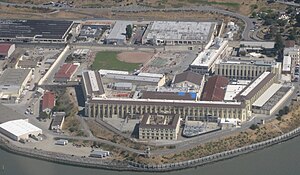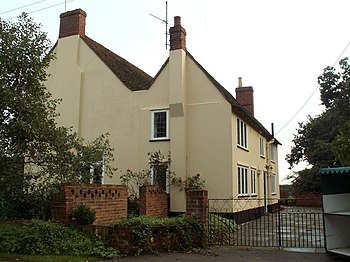My post 4 Ways to Flog the Inner Impulse Shopper is up in Free Money Finance’s March Money Madness tournament. Please take a moment to vote for me(Flog).
Thank you. That is all.
The no-pants guide to spending, saving, and thriving in the real world.
My post 4 Ways to Flog the Inner Impulse Shopper is up in Free Money Finance’s March Money Madness tournament. Please take a moment to vote for me(Flog).
Thank you. That is all.

Serial killers in the United States often gain cult status due to their strange courtroom antics and dramatic personalities. Recently deceased death row inmate Richard Ramirez was definitely one of the most famous serial killers of all time before he passed away of liver failure in California’s San Quentin State Prison.
After a dramatic arrest in 1985 in East Los Angeles by residents who recognized Ramirez from photographs displayed all over the news, Ramirez would sit in jail for years while awaiting a trial that finally began in 1989. There would be no more expensive trial in the history of Los Angeles County except for the O.J. Simpson trial that occurred a few years later.
At a cost of $1.8 million dollars, Los Angelinos would pay dearly for the privilege of trying Ramirez in a court of law. Incredibly, however, this massive sum wasn’t the only cost associated with this vicious serial killer. Because he was sentenced to death and due to the incredibly long appeals process associated with death row inmates, Ramirez sat in jail for over two decades without any fear of actually being put to death by the state of California.
Over the past hundred years, the number of individuals incarcerated in the United States has ballooned from a few hundred thousand people to almost 2.5 million prisoners. The most expensive people to incarcerate are death row inmates, who sit in a type of solitary confinement for decades. A moratorium on future executions in California has ensured that inmates like Ramirez have been costing taxpayers millions of dollars for housing and appeals with no likelihood of being put to death.
According to the American Civil Liberties Union, there are around 700 people sitting on death row in California, which require a massive investment of tax dollars. The state’s ongoing budget crisis and inability to balance its budget has put great strain on the prison system to house so many death row inmates at such an incredible cost.
Richard Ramirez’s untimely death at the age of 53 and his decades-long residency within a state prison brings to light a disturbing fact: more inmates die of natural causes while on death row than are actually put to death. Whether support for the death penalty exists or not, the billions of dollars spent by the state to keep inmates on death row has resulted in just 13 executions since the late 1970s.
A study in 2011 that was conducted by a judge and professor in the state suggested that California has spent over $4 billion since the death penalty was reinstituted. Out of those funds spent, at least a billion dollars was used for housing and incarceration of the inmates, including serial killers like Richard Ramirez.
A further study presented by the Commission on the Fair Administration of Justice in 2008 suggested that keeping the system intact with inmates on death row would cost around $137 million dollars a year. On the other hand, if California was to commute those death sentences to life in prison and abolish the death penalty, the yearly cost would drop to $11.5 million a year.
Offering the families of victims of death penalty-worthy crimes the chance to see a killer or other criminal experience the ultimate punishment may offer some sort of closure. Unfortunately, with the expectation that individuals on death row are more likely to die of natural causes than be put to death in California, the implementation of the death penalty in the state must be reexamined.
Even though we just paid off our credit cards in August and have started competing to pay off our mortgage, we opened a new debt account on Monday.
We’ve been shopping for a new(to us) car for a while. Simply put, we’ve outgrown our current vehicles.
As I said last week, these are our needs:
We were looking for a GMC Acadia, which would meet our needs, but after talking to my brother–an Acadia owner–and the dealer, we decided it wouldn’t be the best fit. It would be marginal for towing the horses and the back row of the older models isn’t as roomy as the new one I sat in.
Saturday, we went to test drive an Acadia, which is where we had the conversation with the dealership. We ended up test-driving a Chevy Tahoe instead of the Acadia. With the options and mileage, it bluebooks for $27531, but they were using it as an online price leader and had it priced at $25000. Maybe I missed something, but the thing ran well, handled great, and the engine sounded good. As a way to get people on the lot, it worked.
Our plan was to put $5000 down, and see about trading in our Dodge Caliber and Ford F150. We brought the Caliber with us. Its bluebook value is $9,969. They offered us $5500, so we went home.
Sunday, we decided to sell the car and truck ourselves. We texted the salesman and offered $24,500. He accepted, we got a new truck that will fit our family and our needs.
With taxes, fees, and our down payment, we now have a car loan for $21564. Our plan is to sell the Caliber for $9500 and the F150 for $6800. That will leave $5354. We have a beneficiary IRA that has to be cashed out relatively soon, so we’re planning to do that early in January to push the tax burden to next year, which will end the loan.
Effectively, we’re paying about $300 in interest to give us a chance to move our assets around to take advantage of an SUV meeting our needs for $3000 under blue book. Yes, we could have waited until the assets were ready, but this truck wouldn’t have been there, so we jumped on it.
This is the complete collection of the Story of Sammy. Sammy is a guy I met after my mother-in-law died in the spring of 2012. My wife and I decided to help him launch a….
Read the stories. It’s better that way.
Part 1, in which we meet Sammy, learn of his dreams and offer to help.
Part 2, in which Sammy jumps into business with both feet, teaching teenagers the value of work.
Part 3, in which Sammy shows us what crackheads and the homeless can accomplish if given the chance.
Part 3.5, in which…holy drama, Sammy!
Part 4, in which I am disappointed.
As of last Monday, we don’t have any tenants in our rental house.

That makes me sad.
It makes me sadder that we were too nice and gave them an extra week free to get their stuff moved out.
Now we get the fun job of painting, replacing the linoleum, and probably cleaning the place up to get it ready for new renters that we haven’t found yet.
New renters.
Ick.
Now, we could put an ad on Craigslist and try to find renters ourselves.
Background checks.
Credit checks.
Interviews and walk-throughs.
Then, when we find someone, we’ll be collecting rent and dealing with any whiny issues that come up.
Yuck.
Or….
We can hire a property manager. The big name property management company in our area charges a $99 set-up fee plus $80 per month.
That covers:
If we add on the tenant-finding service, we’ll be paying them one-month’s rent, but they’ll handle the showings, advertising, background checks, and the lease. And their average tenant placement is 19 days. Another house in the neighborhood that used them had the house rented in about a week.
That moves our landlording firmly into the passive side-hustle category and all it costs us is (essentially) one and a half month’s rent with the added bonus that we’ll be asking the right amount for rent according to the market, instead of guessing. Our last tenants were probably paying $300 too little.
I think the property managers are the way to go, but I have absolutely no experience here.
Have any of you used a property manager? Was it good? Bad? Hell-on-Earth?